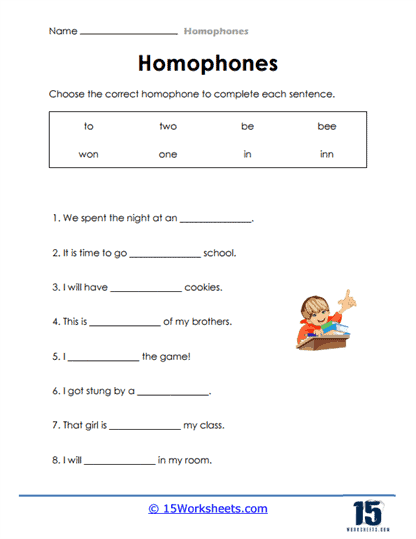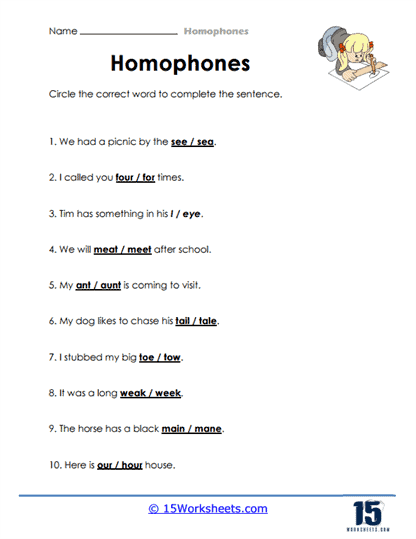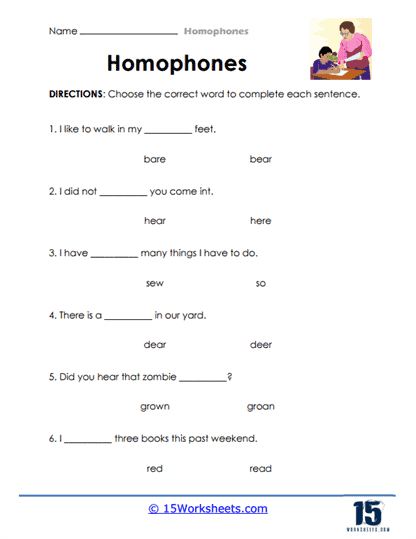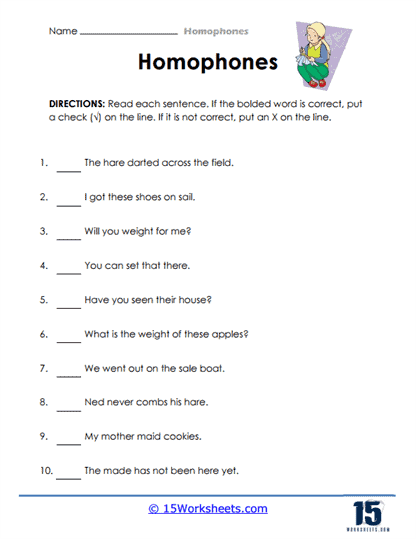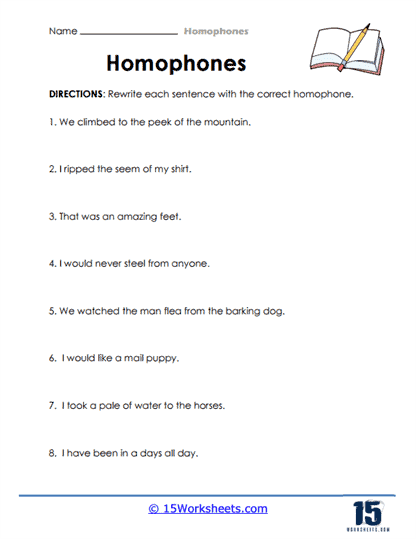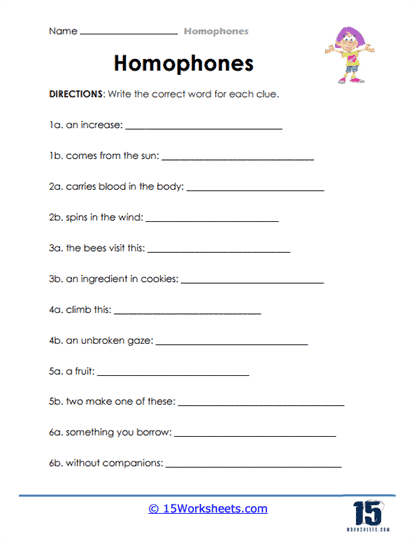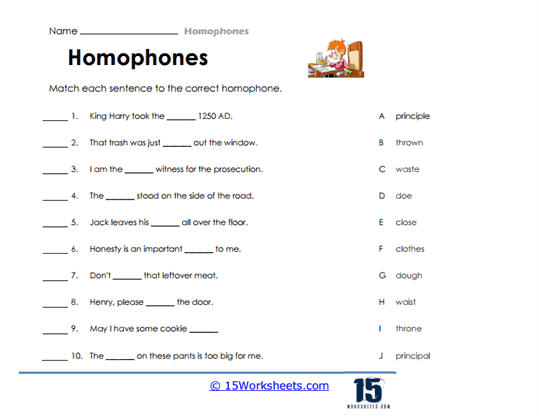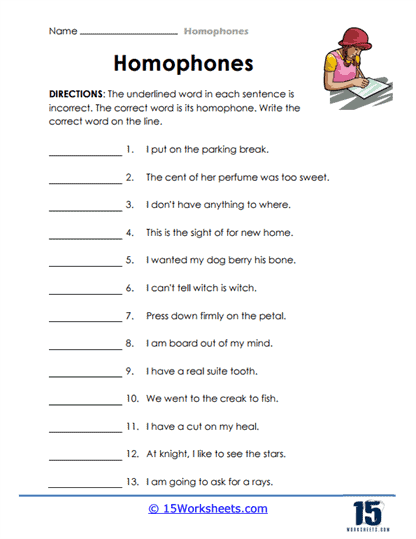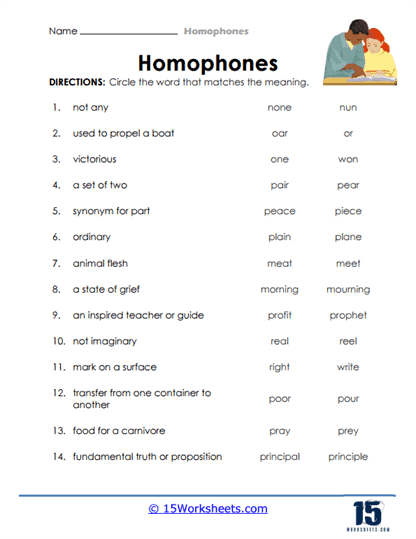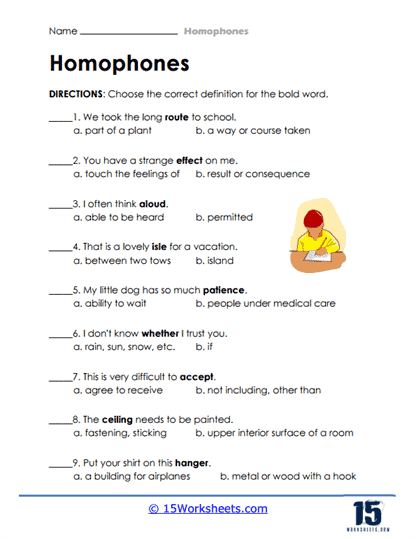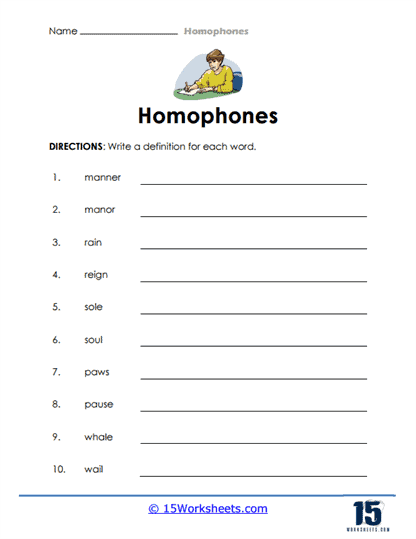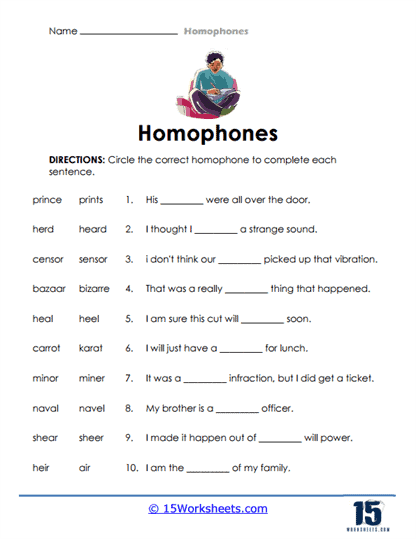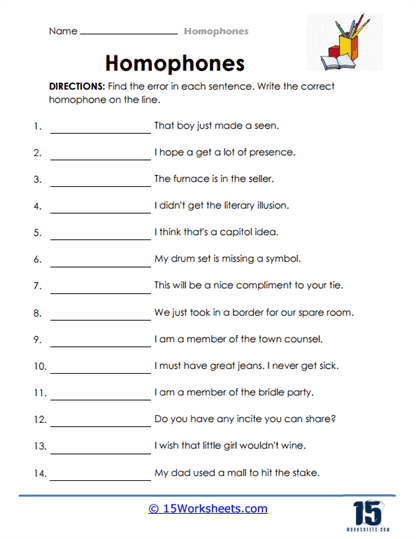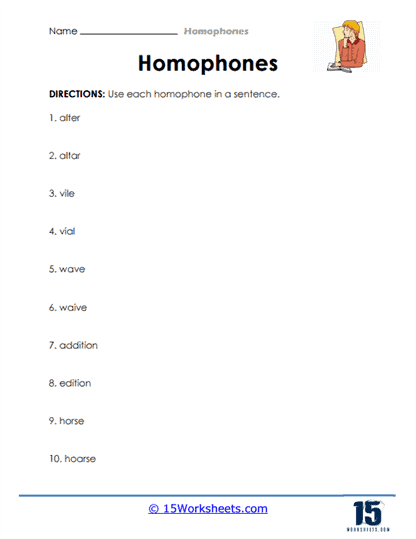Homophones Worksheets
All About These 15 Worksheets
Homophones are words that sound the same but have different meanings and spellings. These Homophones worksheets for students include a variety of exercises to help them learn how to differentiate between commonly confused homophones. Through these worksheets, students will be able to:
- Complete sentences by supplying them with the correct homophones;
- Spot sentences that use incorrect homophones and correct them;
- Be familiar with commonly used homophone pairs;
- Expand their vocabulary by learning the definitions of several homophones;
- And create their own sentences using homophones.
Overall, these worksheets on homophones can be a helpful tool for students to improve their vocabulary and communication skills in English.
What are Homophones?
Homophones are words that sound the same but have different meanings and spellings. These words can often be confusing for English learners or even native speakers, especially if they are used incorrectly in a sentence. Here are some examples of commonly confused homophones:
- “There,” “their,” and “they’re”
- “To,” “too,” and “two”
- “Your” and “you’re”
- “Its” and “it’s”
- “Here” and “hear”
To spot a sentence that uses homophones incorrectly, you can look for errors in usage that result in the sentence not making sense or conveying the intended meaning. Here are some examples:
- Incorrect: Their going to the park over there.
- Correct: They’re going to the park over there.
In this example, “their” is incorrect and should be replaced with “they’re” to convey the intended meaning that the people are going to the park.
- Incorrect: The dog wagged it’s tail happily.
- Correct: The dog wagged its tail happily.
In this example, “it’s” is incorrect and should be replaced with “its” to show possession of the tail by the dog.
Overall, spotting incorrectly used homophones in a sentence involves understanding the context and intended meaning of the sentence, as well as recognizing the proper usage of each homophone. Knowing the differences between commonly confused homophones is an essential part of English language proficiency.

